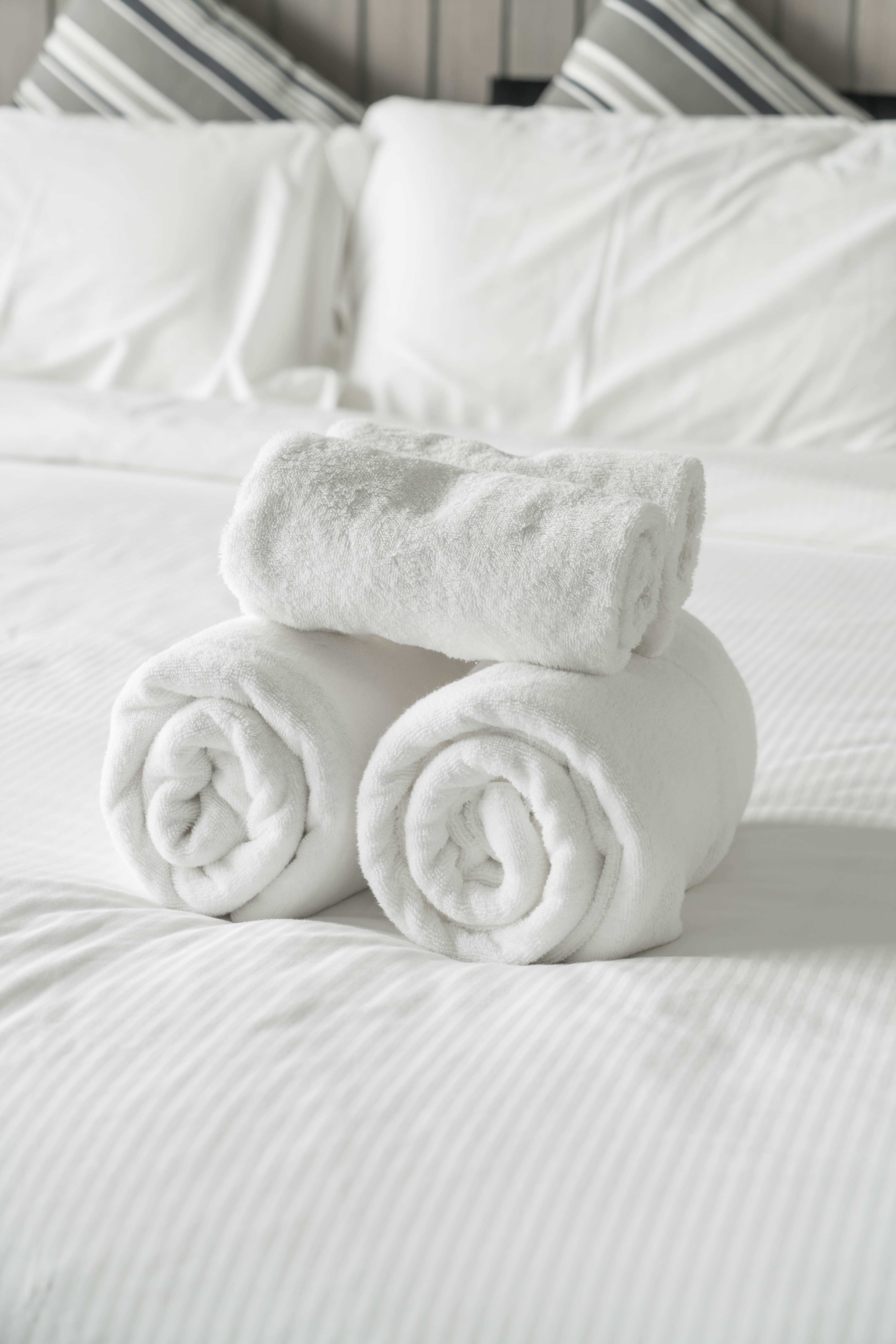The Silent Symbolism of Cleanliness: The Bulrushes
Johannesburg – In the hospitality industry, the significance of first impressions cannot be overstated. Long before guests indulge in your cuisine or experience your service, they have already started to form opinions about your establishment.
This initial judgment is largely shaped by visual and sensory cues that reflect your dedication to cleanliness.
Some of the most effective symbols of your hygiene protocols are often the simplest: crisp white linens and deliberately chosen fragrances.

The Psychology of White Linen
White linens serve a purpose beyond visual appeal; they carry considerable psychological weight.
The spotless whiteness of towels, sheets, tablecloths, and even chefs’ jackets conveys an atmosphere of cleanliness and professional integrity.
This imagery associates itself with trust, freshness, and understated elegance.
“Practically speaking, white linens are the most authentic indicators of quality for your venue,” explains Jeffrey Madkins, Marketing Manager at Unilever Professional.
“In contrast to colored fabrics that can mask stains and wear, white materials reveal every imperfection, ensuring strict accountability in your cleaning standards.
“When patrons observe bright white linens that show no signs of yellowing or grey, they instinctively believe that the same careful attention applies to areas such as your kitchen and storage.”
Maintaining white linens also demonstrates operational excellence, according to Madkins.
“Achieving and maintaining that crisp, bright white requires advanced laundry systems and products, precise water temperature control, effective stain removal techniques, and regular fabric replacements,” he notes.
“These efforts serve as signals to guests that your establishment is devoted to high standards.”

The Science of Scent and Cleanliness
While visual elements capture attention, the influence of scent operates on a more subconscious level, triggering immediate emotional responses.
Research indicates that guests form lasting impressions within minutes of entering an environment, with ambient scent playing a vital role in that rapid evaluation.
Fresh, clean fragrances – such as light citrus or soft floral notes – create what experts refer to as “olfactory cleanliness cues,” providing a competitive edge in business.
These scents do more than mask unpleasant odors; they actively communicate that thorough cleaning and sanitation have taken place.
The absence of foul smells, coupled with carefully chosen fragrances, assures guests of comprehensive hygiene measures.
“An appropriate scent profile can elevate a space from merely appearing clean to genuinely inviting, subtly impacting mood and enhancing guest satisfaction,” states Madkins.
“This is crucial because studies reveal that nearly 70% of purchasing decisions arise from emotional reactions, and a well-curated fragrance is a powerful tool for hospitality businesses to create emotional connections that foster loyalty.”
Strategic Integration
Successful hospitality establishments recognize that white linens and fragrances must work together to create a comprehensive cleanliness strategy.
Freshly laundered fabrics offer a visual foundation, while harmonious scents provide a multi-sensory experience that reinforces the message of superior hygiene practices.
Various hospitality venues, including luxury hotels, utilize HVAC scent distribution systems to deliver seamless brand experiences.
When guests encounter the same subtle fragrance from the lobby to their rooms—alongside crisp bedding—the combined sensory effect leaves a lasting impression of luxury and cleanliness.
This cohesive approach extends across the venue, creating a unified brand experience that visitors remember long after their departure.
Maintaining the Standard
To meet these high standards requires an investment in professional-grade cleaning products and systems specially formulated for commercial hospitality settings.
Products such as Unilever Professional’s Omo and Skip Professional commercial laundry items meet stringent industry standards.
When combined with scented fabric softeners like Comfort, they deliver on their promises of stain removal and fragrance.
Regular staff training is also essential to ensure that employees understand that linen management and fragrance selection are not just chores—they are critical elements of guest experience and brand perception.
“In an industry where trust is essential, hygiene goes beyond simply adhering to health regulations,” concludes Madkins.
“These seemingly simple features—immaculate textiles and carefully curated scents—become effective tools for building guest confidence and loyalty.
“They elevate cleanliness from a basic expectation to a competitive advantage.”

